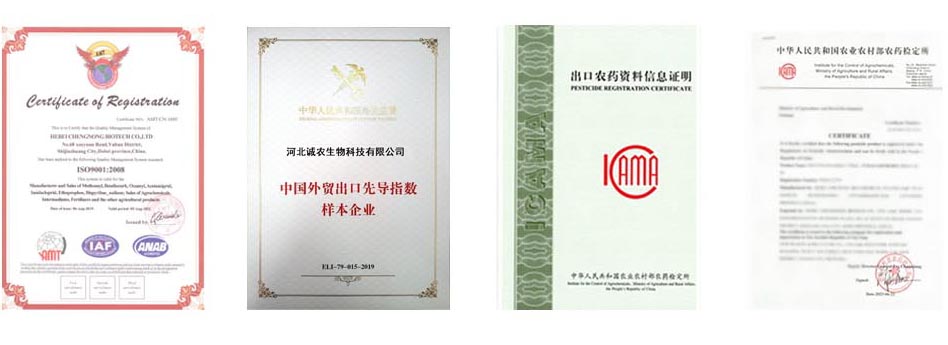
Nov . 19, 2024 21:52 Back to list
lufenuron 98%tc product
Understanding Lufenuron 98% TC A Comprehensive Overview
Lufenuron is a pesticide that has gained significant attention in agricultural pest management due to its unique mode of action and effectiveness. It belongs to the class of chitin synthesis inhibitors, making it a valuable tool in controlling various pests that threaten crops. The formulation known as Lufenuron 98% TC (Technical Concentrate) is particularly noteworthy, as it offers high potency and versatility in its application.
Mechanism of Action
Lufenuron operates by disrupting the chitin synthesis in insects. Chitin is a crucial component of the exoskeleton in arthropods, including insects and some crustaceans. By inhibiting the enzyme responsible for chitin production, Lufenuron effectively prevents pests from developing properly, leading to growth inhibition and ultimately causing mortality. This mode of action is especially effective against larvae, making it a preferred choice for managing pest populations during their vulnerable developmental stages.
Target Pests
The efficacy of Lufenuron 98% TC extends to a wide range of pests. Primary targets include lepidopteran pests such as caterpillars, as well as various beetles and other chewing insects. This broad-spectrum activity makes it an essential component of integrated pest management (IPM) programs, allowing for robust control of multiple pest species while minimizing the risk of resistance development.
Application and Use
lufenuron 98%tc product

Lufenuron can be applied through various methods, including foliar sprays or soil treatments, depending on the specific crop and pest involved. Farmers and agronomists often integrate Lufenuron into their pest management strategies, strategically timing applications to coincide with the life cycles of target pests for maximum effectiveness. As a 98% TC formulation, it is typically diluted before use, allowing for tailored concentrations suited for different agricultural needs.
Environmental Impact
One of the significant advantages of using Lufenuron is its reduced impact on non-target organisms. Because it specifically targets chitin synthesis, beneficial insects such as pollinators and natural predators of pests are less likely to be affected. This selective toxicity aligns well with sustainable farming practices and supports biodiversity in agricultural ecosystems. Additionally, Lufenuron’s relatively low toxicity to mammals and birds further enhances its appeal as a safer pesticide option.
Regulatory Status and Safety
As with any pesticide, regulatory approval and safe handling practices are paramount. Lufenuron is subject to scrutiny and must comply with specific guidelines established by relevant agricultural authorities. It is essential for users to adhere to label instructions and safety precautions to ensure effective and responsible application. Proper training and education regarding the use of Lufenuron contribute to both agricultural success and environmental stewardship.
Conclusion
Lufenuron 98% TC stands out as a formidable tool in the arsenal of modern pest management strategies. Its innovative mode of action, combined with its capacity to target a diverse array of agricultural pests with minimal harm to beneficial species, makes it particularly valuable. As agriculture increasingly adopts sustainable practices, the integration of effective biopesticides like Lufenuron is likely to play a critical role in promoting healthy crop production while protecting the environment. Farmers and agronomists should consider incorporating Lufenuron into their pest management programs to not only enhance productivity but also to contribute to a more sustainable agricultural landscape.
-
Kasugamycin Fungicide: Efficient Bacterial & Fungal Control
NewsAug.02,2025
-
Emamectin Benzoate: AI-Optimized Pest Control Solution
NewsAug.01,2025
-
Best Abamectin 95% | Top Pesticide for Crop Protection
NewsJul.31,2025
-
Insecticide Spirotetramat 11% + Thiacloprid 11% SC at Good Price
NewsJul.30,2025
-
Best Abamectin SDS - Premium Quality & Reliable Safety Data
NewsJul.29,2025
-
Agrochemicals Pesticides Solutions for Sustainable Farming
NewsJul.29,2025
